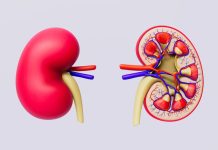
In a new study, researchers found children who suffer trauma from abuse or violence early in life show biological signs of aging faster than children who have never experienced adversity.
They examined three different signs of biological aging–early puberty, cellular aging, and changes in brain structure–and found that trauma exposure was associated with all three.
The findings show that exposure to adversity in childhood is a powerful predictor of health outcomes later in life–not only mental health outcomes like depression and anxiety but also physical health outcomes like heart disease, diabetes, and cancer.
The research was conducted by a team at Harvard University.
Previous research found mixed evidence on whether childhood adversity is always linked to accelerated aging.
However, those studies looked at many different types of adversity—abuse, neglect, poverty, and more—and at several different measures of biological aging.
To disentangle the results, the team decided to look separately at two categories of adversity: threat-related adversity, such as abuse and violence, and deprivation-related adversity, such as physical or emotional neglect or poverty.
The researchers performed a meta-analysis of almost 80 studies, with more than 116,000 total participants.
They found that children who suffered threat-related trauma such as violence or abuse were more likely to enter puberty early and also showed signs of accelerated aging on a cellular level–including shortened telomeres, the protective caps at the ends of our strands of DNA that wear down as we age.
However, children who experienced poverty or neglect did not show either of those signs of early aging.
In a second analysis, the team reviewed 25 studies with 3,253 participants that examined how early-life adversity affects brain development.
They found that adversity was associated with reduced cortical thickness – a sign of aging because the cortex thins as people age.
However, different types of adversity were linked to cortical thinning in different parts of the brain.
Trauma and violence were linked to thinning in the ventromedial prefrontal cortex, which is involved in social and emotional processing, while deprivation was more often associated with thinning in the frontoparietal, default mode, and visual networks, which are involved in sensory and cognitive processing.
These types of accelerated aging might originally have descended from useful evolutionary adaptations, according to the team.
In a violent and threat-filled environment, for example, reaching puberty earlier could make people more likely to be able to reproduce before they die.
And faster development of brain regions that play a role in emotion processing could help children identify and respond to threats, keeping them safer in dangerous environments.
But these once-useful adaptations may have grave health and mental health consequences in adulthood.
The new research underscores the need for early interventions to help avoid those consequences. All of the studies looked at accelerated aging in children and adolescents under age 18.
There are numerous evidence-based treatments that can improve mental health in children who have experienced trauma.
One author of the study is Katie McLaughlin, Ph.D., an associate professor of psychology.
The study is published in Psychological Bulletin.
Copyright © 2020 Knowridge Science Report. All rights reserved.



